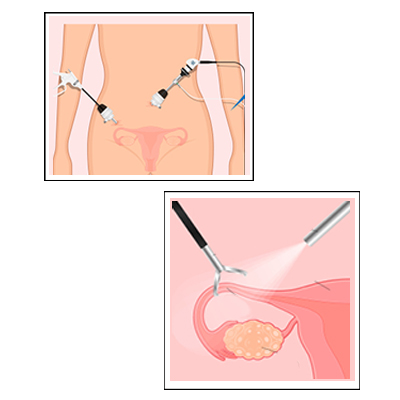laparoscopic tubectomy in anantapur
The decision to prevent further pregnancies, whether stemming from a desire to have no more children or a commitment to remaining childless, is a deeply personal matter. If you are considering a tubal ligation, it is essential to be well-informed about the procedure, its advantages, and potential side effects.
Process
Laparoscopic tubal ligation by Laparoscopic Tubectomy surgeon in Anantapur is a surgical procedure aimed at sterilization, during which a woman's fallopian tubes are either occluded and blocked or cut and sealed. Both techniques effectively inhibit the fertilization of eggs. This form of sterilization is considered permanent. Let us understand the advantages and potential shortcomings as well.
- Initially, an intravenous line (IV) will be established in a vein located in your hand or arm. A general anesthetic will be administered through the IV to relax your muscles and alleviate pain during the surgical procedure.

- Subsequently, a small incision will be made near your navel. A laparoscope, which is a slender viewing instrument approximately the diameter of a pencil, will be introduced through this incision, and your abdomen will be inflated with carbon dioxide to enhance the visibility of your organs.
- Following this, a surgical instrument will be inserted through a second small incision made at your pubic hairline. The healthcare provider will locate your fallopian tubes and proceed to seal them using a band, ring, or clip. In some instances, an electric current known as electrocoagulation may be employed to seal the fallopian tubes.
- Once the fallopian tubes are sealed, the laparoscope will be removed, and dissolvable stitches will be utilized to close the incisions.
Advantages and Side effects
Laparoscopic sterilization is generally conducted as an outpatient procedure and can be performed at any time. The smaller incisions contribute to a reduced recovery time post-surgery and lower the risk of complications. In most situations, you will be able to leave the surgical facility within four hours following the laparoscopy. Following the procedure, it is common to experience abdominal discomfort and fatigue. The specific anesthesia administered, and the surgical technique employed may influence the symptoms you encounter. The typical side effects associated with tubal ligation include
- Pain in the shoulder
- Bloating
- Cramping in the abdomen
- Nausea
- Sore throat (resulting from the breathing tube)
- Dizziness
Should you experience persistent pelvic pain beyond a few days or develop a fever, it is imperative to reach out to Best Gynecology doctor in Anantapur, Dr. G. P Sandhya Reddy
